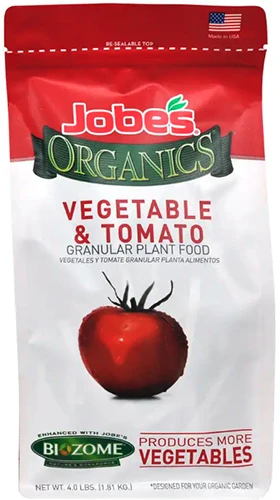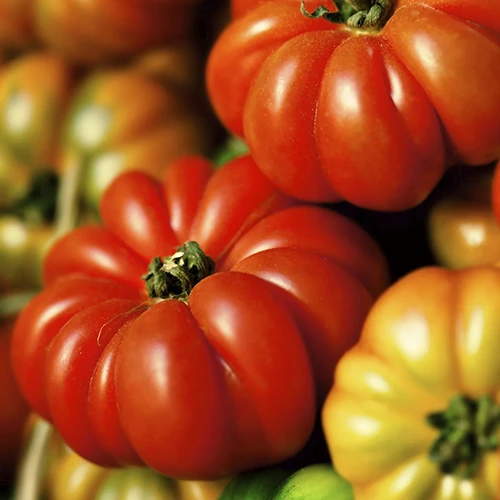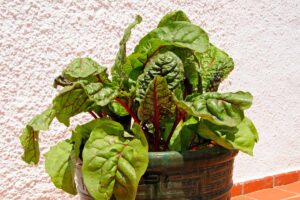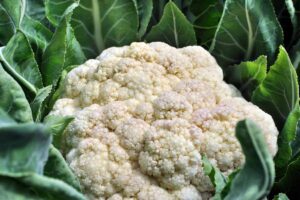Solanum lycopersicum ‘Costoluto Genovese’
Growing ‘Costoluto Genovese’ tomatoes is one way to experience a taste of Italy without a passport or plane ride.
This heirloom tomato variety hails from Genoa, a Mediterranean port city in northwestern Italy. Its flavor is intense and highly acidic, so it’s a natural choice for authentic sauce recipes and canning.
It’s also delicious as a salad tomato or slicer.

We link to vendors to help you find relevant products. If you buy from one of our links, we may earn a commission.
What really sets ‘Costoluto Genovese’ apart are its looks. The fruits are attractive, bright red, and have deeply pleated flesh that produces scalloped edges when they’re sliced.
If you enjoy growing vegetables with an unusual appearance, this one definitely fits the bill.
But don’t make up your mind about ‘Costoluto Genovese’ just yet.
I have a bit of background and a bunch of growing tips to share that will help you decide if this heirloom tomato will suit your home garden.
Here’s everything I’ll cover up ahead:
What You’ll Learn
What Are ‘Costoluto Genovese’ Tomatoes?
Like all of the tomatoes we grow in our gardens, ‘Costoluto Genovese’ is a cultivar of the Solanum lycopersicum species, which originated in South and Central America.
As is typical for tomatoes, it is not at all frost hardy, but can be grown as an annual in USDA Hardiness Zones 3 to 11 or as a tender perennial in Zones 8 to 11.
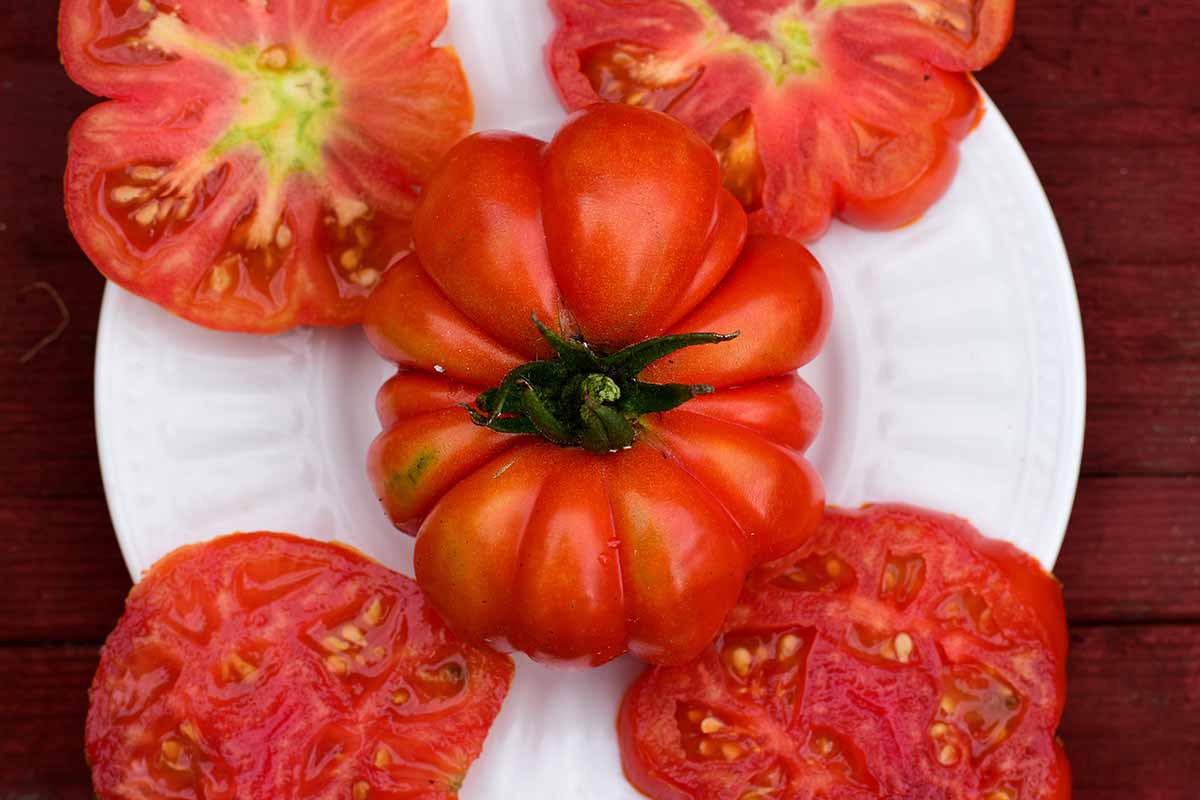
It’s an indeterminate variety, which means it produces fruit that ripens throughout a prolonged harvest season rather than within a two- or three-week window.
Most people categorize this variety of tomato as a beefsteak, due to its rounded fruits that can weigh six to eight ounces and taste good sliced for sandwiches and salads.
But it’s also one of the few vining varieties that produces large fruits while still being considered a canning tomato.
In other words, this variety has a trifold appeal for fresh eating, cooking, and preserving.
Its meaty flesh and tart flavor profile lend themselves to Italian cuisine, so it’s no surprise to learn this heirloom was bred in Genoa near the turn of the 19th century.
Known to have traveled extensively in Italy in 1787, Thomas Jefferson grew the tomato in his gardens at Monticello, starting in 1809.
It’s not a particularly common variety outside of Italy, but it does have lots of fans among foodies, chefs, and preservationists.
For example, the folks who planted the 1812 Garden at Historic Fort Osage in 2009 in Sibley, Missouri, included a variety they refer to as “Thomas Jefferson’s 1809 ‘Costoluto Genovese’” in their plot, demonstrating the daily practices and lifestyle of a bygone era with a nod to the historic garden of the third US President.

An open-pollinated heirloom, it’s one of the parents of the popular hybrid ‘Genuwine,’ the other being ‘Brandywine.’
Its vines can reach six or seven feet high and require staking. The plants produce those half-pound fruits starting about 75 days from transplant.
These are the distinguishing feature of ‘Costoluto Genovese,’ with heavy lobes, flattened, pinched tops, and bright red skins.
Can’t you just taste them? Let’s get closer to a possible harvest with some tips for growing.
Propagation
Because they’re not widely available as live starts, it’s important to plan ahead if you intend to grow ‘Costoluto Genovese’ in your home garden.
You’ll most likely need to sow the seeds yourself.
To give the plants the required 75 days to reach maturity from transplant, sow the seeds indoors about six weeks before the time you anticipate being able to transplant them into the garden.
Shoot for starting them four weeks ahead of the average last frost date in your area. That should give them enough time to sprout, grow several sets of true leaves, and harden off ahead of planting outside.
Don’t use ordinary garden soil for this project. Instead, sow the seeds in a specially formulated seed-starting mix.
Sowing them a quarter of an inch deep, plant one seed per one-inch cell, or plant multiple seeds two inches apart in a shallow tray with drainage holes.
Be sure to nestle the cells or tray in a second tray without drainage so the soil will stay moist without spilling excess water on your workspace.
Cover the tray with a clear humidity dome or plastic wrap, and use a spray bottle of water to keep the soil moist but not wet until the seeds germinate.
Keep the temperature at 70 to 75°F until you see sprouts, which usually takes about seven to 14 days. You may need a heat mat if your house is not that warm – I know mine isn’t!
After the seeds germinate, move them as quickly as possible to an area exposed to a strong source of light, be that a grow light or a sunny windowsill.
Then keep them moist and in the temperature range of 60 to 70°F until it’s time for them to graduate to bigger cells, or to be hardened off and transplanted outdoors.
You can find step-by-step instructions for sowing indoors and transplanting in our guide, “Six Easy Steps to Growing Tomatoes from Seed.”
While this method doesn’t come up often, it is also possible to start ‘Costoluto Genovese’ plants from cuttings, particularly if you live in a warm region where tomatoes may be grown as perennials.
If you’re able to locate full-size plants to provide cuttings for rooting, and if you have time to successively plant additional starts of this variety in the course of the growing season, keep this option in mind.
Basically, you would need a six-inch tip cutting from a healthy tomato plant for each new start – a stem that hasn’t started setting fruit.
Snip off any flowers before you try to root the cutting, and strip the leaves from the bottom of the stem until you only have two leaves left at the top.
Fill a four-inch container that has drainage holes with about three inches of dampened all-purpose potting soil.
I prefer to use biodegradable pots so I can transplant the starts pot and all, but repurposed milk cartons or other pots you have around are fine too, as long as they’re clean and have been sterilized with hot soapy water or a diluted bleach solution.
Use a table knife to make a hole to insert the stem into, stopping just half an inch from the bottom of the container.
Holding it upright, place the stem into the hole. Tamp the soil, then firm more soil around the stem until all the nodes that you removed leaves from are covered.
Place the container on a saucer or plate to catch any water that leaks out, and place it in a protected spot with a temperature around 70 to 75°F.
A windowsill with indirect light is best, or a spot near a wall on the patio may work if the weather’s consistently warm enough.
Keep the soil moist but not saturated, using a clean spray bottle of water.
The potted cuttings need to stay out of the direct sun at first, but after a week you’ll want to move them into spots with progressively stronger light until by week two they are growing in full sun.
At that point, check for roots. You can transplant the rooted cuttings following the same process you would with ‘Costoluto Genovese’ grown from seed indoors.
How to Grow
Growing this heirloom tomato with its heavy fruits takes extra-nutritious, well-draining soil, full sun, and regular watering.
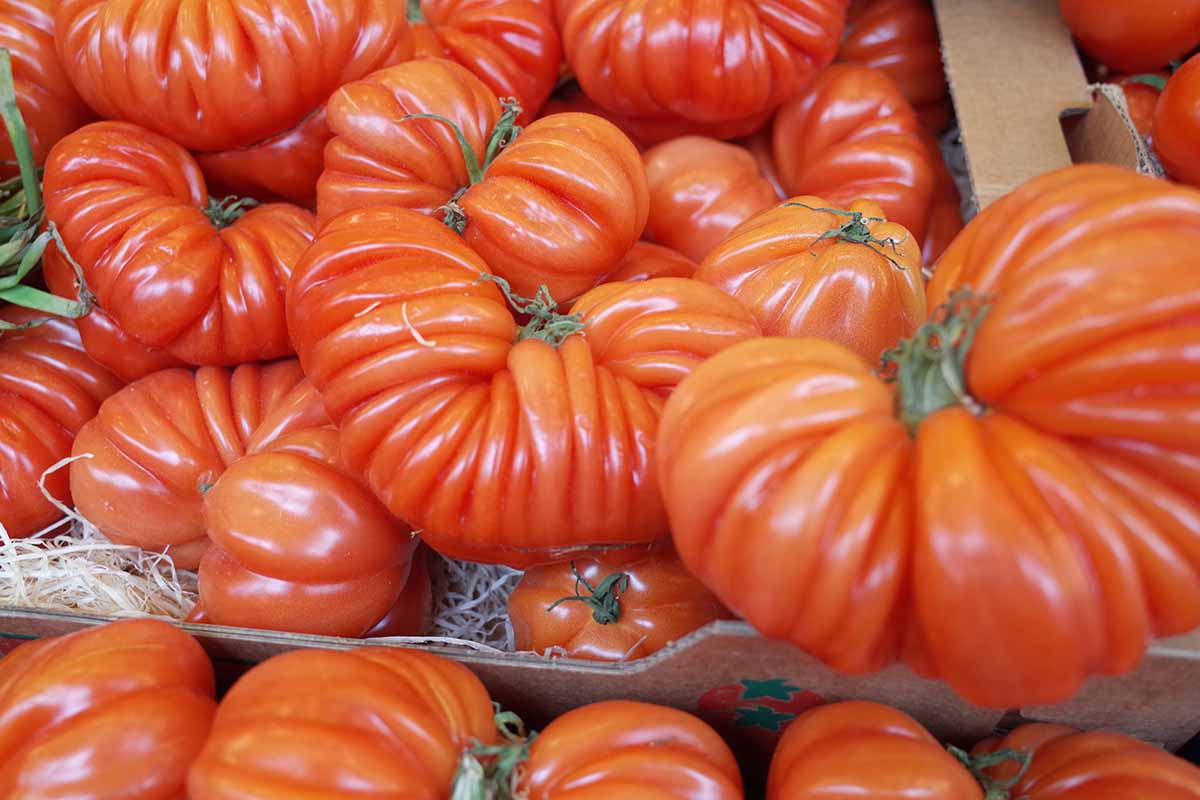
You’ll want to amend the soil with plenty of aged manure or other composted organic material, and also check the pH with a soil test.
You want a pH between 6.0 and 6.8, and the earlier in the season you can start amending soil that’s out of that range, the better.
If your garden patch is more than 0.1 points out of that pH range, you may want to start out with a raised bed you fill with suitable soil, and concentrate on building a better pH for the following year.
You can plant ‘Costoluto Genovese’ in containers, but it wouldn’t be my first choice. For one thing, this plant grows as tall as six or seven feet and produces half-pound fruits, which means it can topple over easily.
It also is a heavy feeder and needs lots of water, and all that fertilizing and watering can be hard to keep up with for container-grown tomatoes.
But if you’re sold on this variety and don’t have a suitable garden site or raised bed, go for it! Just be sure each plant gets its own pot that holds at least seven gallons of soil formulated for container-grown vegetables.
Vining, indeterminate tomatoes like these also need substantial support from a trellis, tripod, or post at least six feet tall.
For tomatoes this tall, I usually use an upended eight-by-four-foot cattle fence panel with two-by-four-inch openings, supported by wooden posts. It’s large enough to support two or three plants on each side.
It may feel odd at the time, but you must insert your intended supports when you transplant the seedlings. If you wait till later, you may disturb their roots trying to install support.
Don’t be too hasty about planting your tomatoes. Wait until all threat of frost has passed.
Transplant only once the air temperature is consistently above 55°F and the soil is at least 65°F.
If you’re faced with a short growing season, you may need to get a head start with a springtime cold frame – our guide has details.
Once your plants are established, completing a few chores will help keep them healthy throughout the rest of the season.
When they’re a few inches tall, you’ll want to layer two inches of mulch around the seedlings to conserve water and suppress weeds.
Be sure to leave a couple of inches around the stems of the plants unmulched. Straw or grass clippings from a lawn that hasn’t been treated with herbicide or pesticides are good choices, as is mushroom compost.
Speaking of rain, if you don’t get at least an inch per week during the prime growing season, be sure to supplement.
Your goal is to provide a steady supply of water aimed at the soil level, not sprinkled above the plants. Consider using drip irrigation or soaker hoses, so you don’t get the leaves wet. Lingering moisture can promote certain waterborne diseases and invite moisture-loving pests.
Once you notice that your plants are setting fruit, you’ll want to fertilize them every few weeks.
Use a product formulated for vegetables or tomatoes, and follow the manufacturer’s instructions.
Jobe’s Vegetable and Tomato Fertilizer
One option I like is the organic Jobe’s Vegetable and Tomato 2-5-3 (NPK), which is available in four-pound bags from Home Depot.
Throughout the season, watch out for insect pests like aphids and hornworms.
Our guide to growing tomatoes has a full rundown on potential pests. Be sure to look at it since so many pests can be deterred with smart garden practices, and so many vegetable garden diseases are transmitted by bugs.
Some of the dozens of potential tomato ailments you may encounter include physiological issues like catfacing and those caused by fungal pathogens such as anthracnose and black mold.
You can prevent most of these issues by judiciously rotating your crops, spacing your plants so they receive ample air circulation, destroying diseased plants, and removing plant debris at the end of the season.
Our guide has further tips on detecting and coping with the most common tomato diseases.
Growing Tips
- Plant in full sun.
- Install stakes or cages at planting time.
- Water via a drip or soaker hose to keep the leaves dry.
- Add a two-inch layer of mulch when the plants are a few inches tall.
- Apply a fertilizer formulated for vegetables or tomatoes every few weeks once the plants set fruit.
Where to Buy
These quirky heirlooms can be hard to find as live plants. If a local nursery or plant sale does offer them, they’ll usually sell out quickly.
Happily, you can readily find seeds from reputable companies.
‘Costoluto Genovese’ seeds in packets of various sizes can be purchased from Eden Brothers.
They’re also available in 30-seed packets from Park Seed via Amazon.
Harvest and Storage
These tomatoes can take a couple of weeks longer to produce ripe fruits than some more modern-day hybrids of a comparable size.
The harvest starts about 75 days from transplant, unless high temperatures delay fruit set.
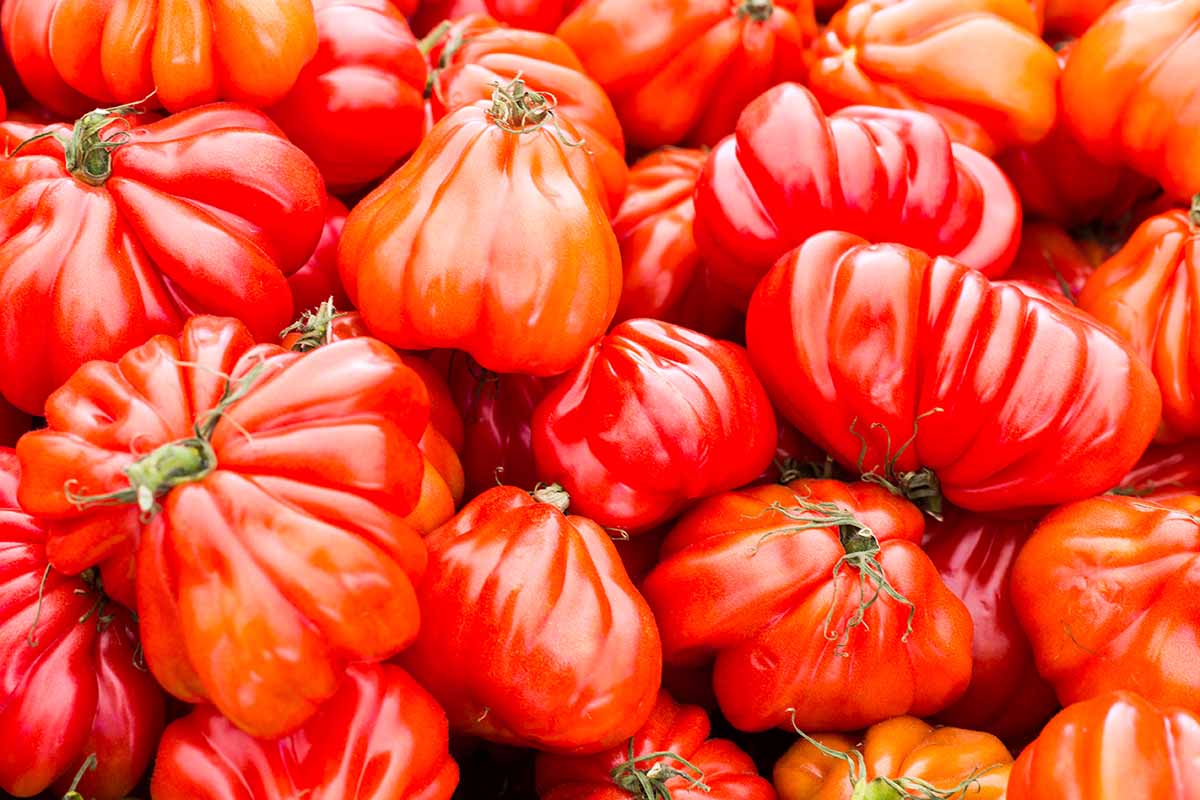
You’ll be able to keep picking from that point until it gets so cold the plants can no longer produce, with a harvest window of four to eight weeks, depending on how early you were able to plant.
If you’re having difficulty with green tomatoes that refuse to ripen on the vine, check out our guide for solutions!
It’s a good idea to count the days from transplanting and set a reminder on your cell phone or make a note in your gardening journal to start monitoring the fruits for ripeness around that time.
Here’s where you’ll need to recognize the characteristics of large-fruit heirloom tomatoes. They will be juiciest and most flavorful if you let them ripen completely on the vine.
For ‘Costoluto Genovese,’ you would wait for the bright red color to fully develop and for the skins to yield slightly when you gently press them with your thumb.
At that point, you can easily pluck them from the stems or cut them away with clean scissors.
Be careful not to stack them for their journey to the kitchen or they might bruise. And skip refrigeration – It destroys the texture and robs them of flavor.
Wait to wash until right before you eat them or cook with them. And if they’re going in a salad after washing, make sure to gently dry the whole tomatoes with a clean dish towel, so they won’t make the dressing watery.
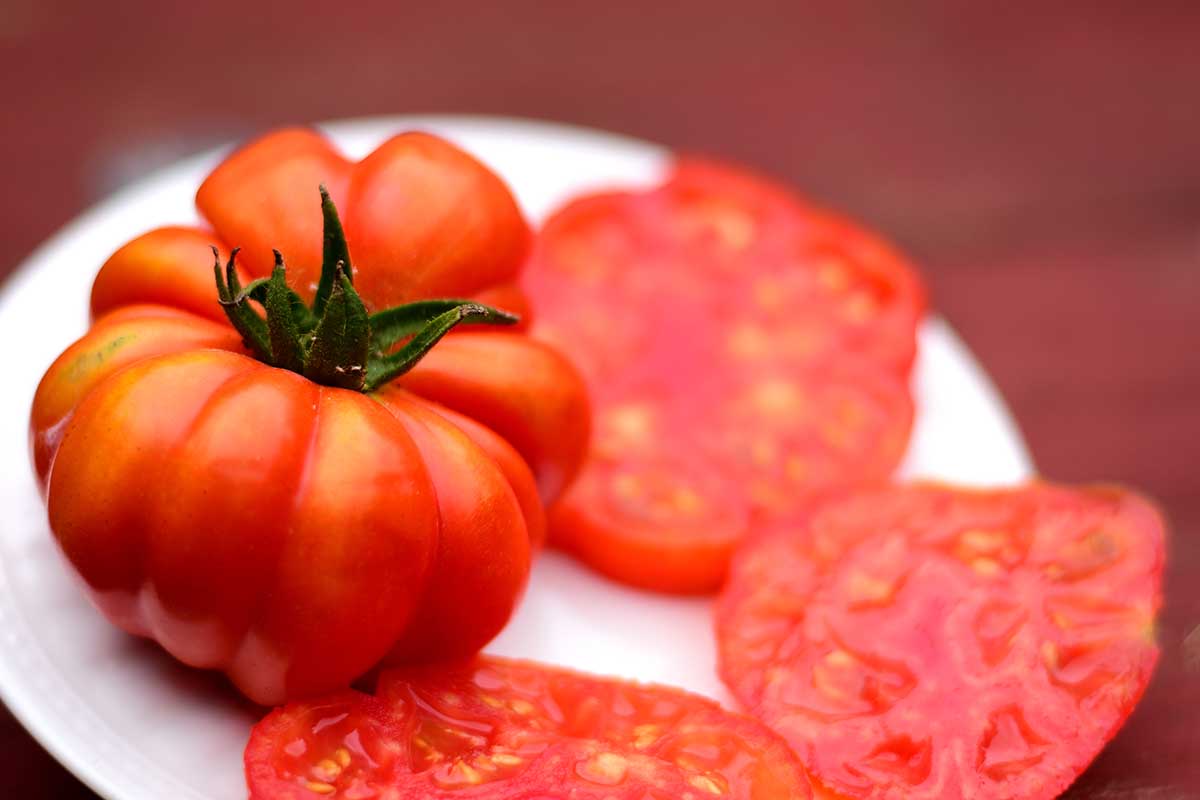
Like most heirloom varieties, they won’t last more than two or three days on the kitchen counter before they start to rot. You may have to pick them a little prematurely if you need a couple of extra days of storage between harvest and consumption.
This won’t produce the optimal flavor, but they’ll still be juicy and tasty picked three or four days ahead of full-color ripeness.
This brings me to the only negative I can think of with these sauce tomatoes:
Unlike commercial tomatoes that have been bred to withstand shipping and can sit for days waiting to be selected from grocery store bins, these fruits are thin-skinned and don’t travel or store well.
So you can’t load up the car with a peck of them and drive three states away to share them, and you must consume them within a couple of days of picking.
Good thing they taste so great in sauce and multitudes of other dishes, hmm?
And you can readily preserve any excess. In fact, some home gardeners grow these tomatoes so they’ll have big batches of sauce to enjoy throughout the winter, with nary a thought of slicing them for salad.
Whichever approach you’d prefer, you’ll find some tips in the next couple of sections.
Preserving
Stocking up? These sauce tomatoes are invaluable for the home preserver.
The pleats make them a bit more difficult to peel before canning or freezing, but that authentic Italian taste makes the chore well worth it.
Or you can skip it and freeze ‘Costoluto Genovese’ chunks without peeling them first.
You can find more details about freezing your tomato harvest in our guide.
The slices with the scalloped edges are a fun shape for dehydrating too. You can find dehydration basics here.
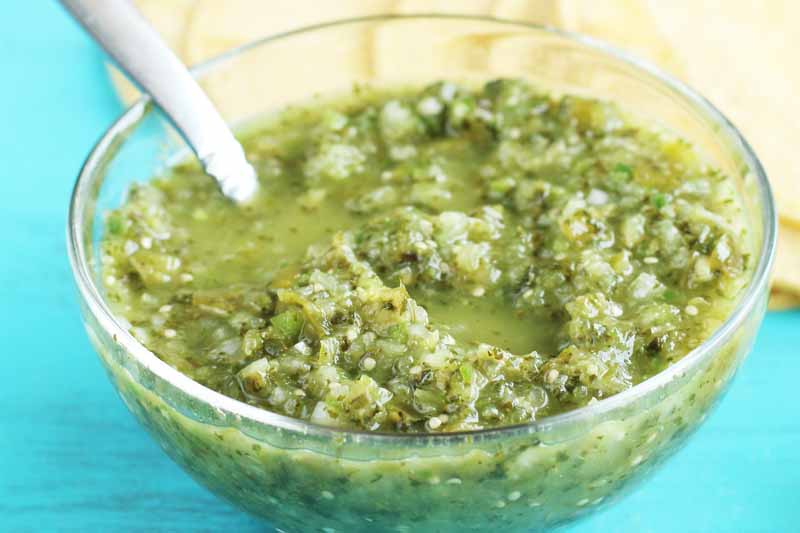
Don’t overlook salsa and jam! Use any crunchy green tomatoes left at the end of the season in place of tomatillos for this salsa verde recipe from our sister site, Foodal.
The ripe fruits are delicious in Foodal’s scratch-made tomato jam, which can be popped into the freezer in canning jars or airtight containers. It’s also suitable for water-bath canning.
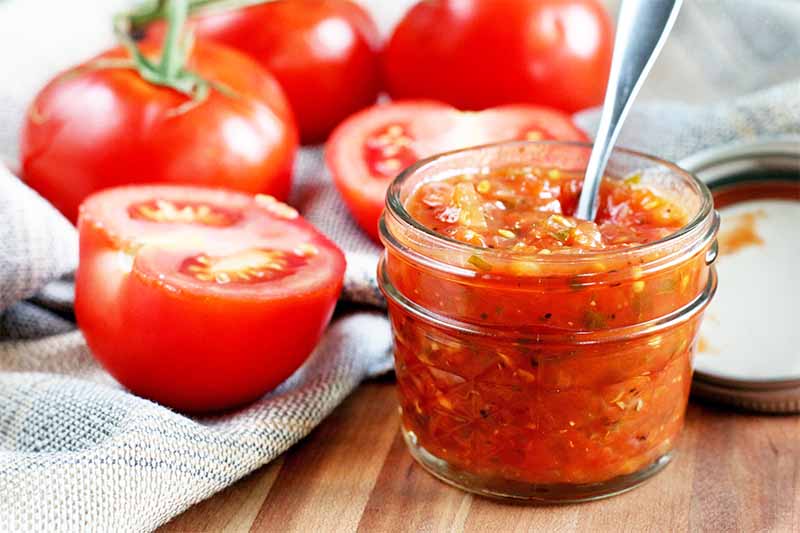
Foodal features a recipe for homemade ketchup that will be extra tangy made with ‘Costoluto Genovese,’ too.
Recipes and Cooking Ideas
Once the harvest begins, all your hard work starts to pay off, and I hope you will fully enjoy the fruits of your labor!

Start easy, serving lightly salted slices alongside home fries and scrambled eggs for a leisurely summer breakfast, or slide them atop burgers or into BLTs.
You can also toss chunks into pasta or green salads, or use thin slices as a pizza or flatbread topping.
Fresh tomato sauce or gazpacho is sublimely piquant when made with these extra-flavorful, tart fruits.
Foodal’s recipe for the raw soup is one you can personalize to your own taste and prepare throughout the harvest season.
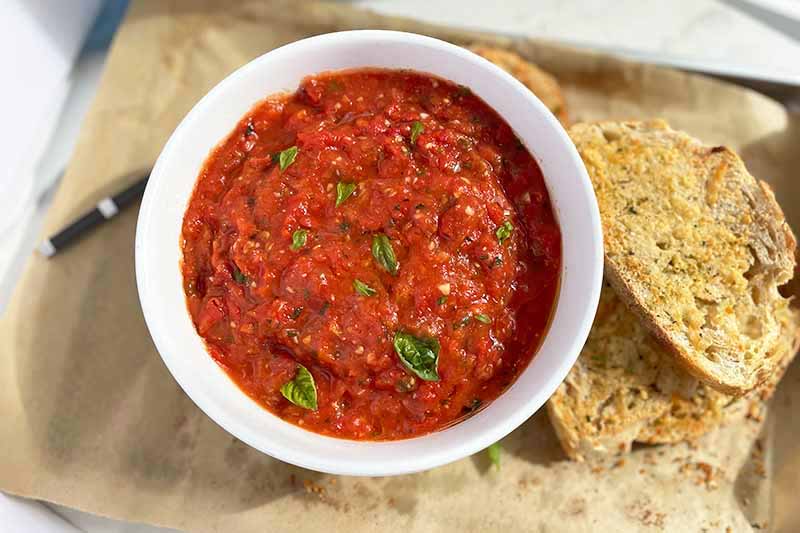
Or use these heirlooms for homemade tomato paste or any number of cooked sauces. Foodal’s oven-roasted tomato sauce is a tasty basic option to cook on repeat.
When you have a fresh harvest coming in over the period of six to eight weeks, you’ll have plenty of tomatoes to experiment with, so enjoy!
Quick Reference Growing Guide
| Plant Type: | Annual vegetable | Tolerance: | Heat |
| Native To: | Central and South America | Water Needs: | High |
| Hardiness (USDA Zone): | 3-11 (8-11 perennial) | Maintenance: | Moderate |
| Season: | Summer | Soil Type: | Organically rich loam |
| Exposure: | Full sun | Soil pH: | 6.0-6.8 |
| Time to Maturity: | 75-80 days | Soil Drainage: | Well-draining |
| Spacing: | 24-30 inches | Companion Planting: | Basil, beans, carrots, chives, garlic, marigolds, nasturtiums, onions, parsnips, oregano |
| Planting Depth: | 1/4 inch (seeds), below 2nd set of leaves (transplants) | Avoid Planting With: | Brassicas including kale and broccoli, corn, potatoes |
| Height: | 6-7 feet | Family: | Solanaceae |
| Spread: | 20-30 inches | Genus: | Solanum |
| Growth Rate: | Fast | Species: | Lycopersicum |
| Common Pests and Disease: | Aphids, armyworms, hornworms, slugs, snails, stink bugs, thrips; Anthracnose, black mold, blight, blossom end rot, catfacing, fusarium wilt, mosaic virus, powdery mildew, verticillium wilt | Cultivar | 'Costoluto Genovese' |
Gotta Love Lobed Heirloom Tomatoes
Even with a blindfold on, you’ll love the acidic, intense flavor of these tomatoes. Their appearance is a bonus!
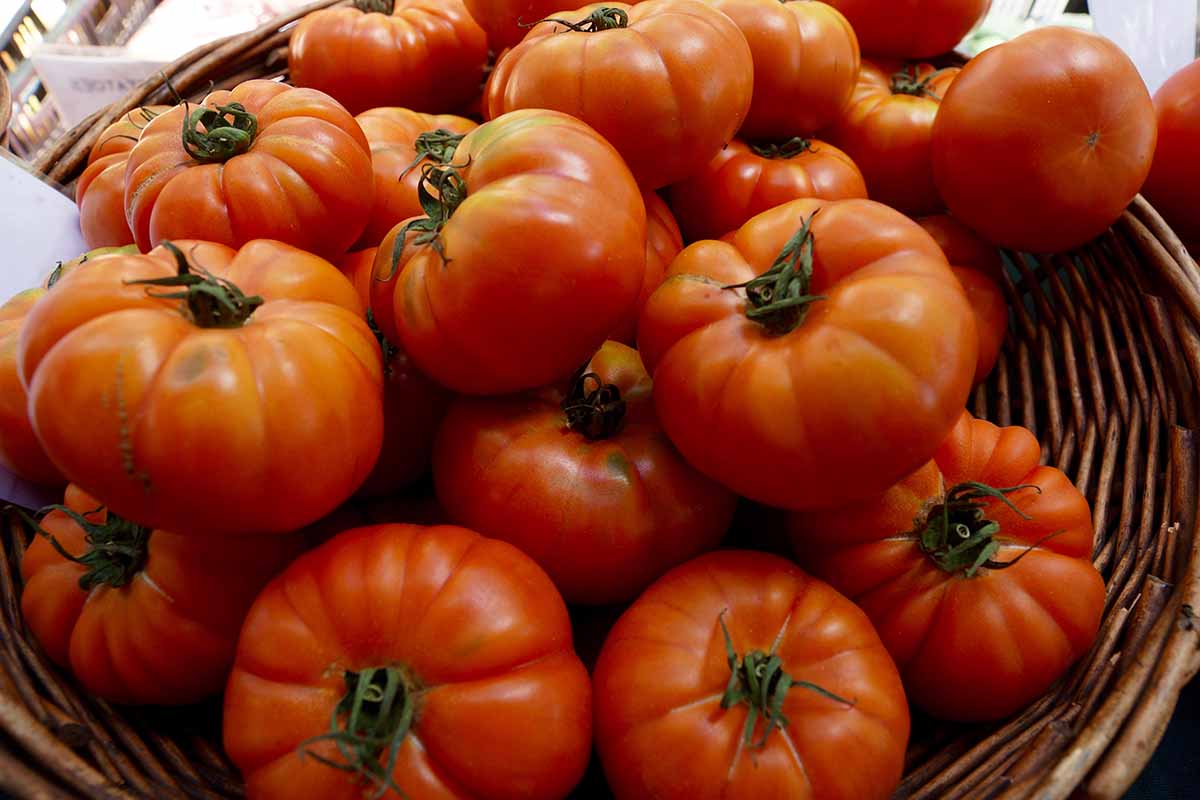
The charming scalloped edges are evident when you cut ‘Costoluto Genovese’ for open-face sandwiches or a Caprese salad – or place them on a platter beside the grill with some buttercrunch lettuce, awaiting fresh burgers.
What about you? Do you have any growing, serving, or preserving tips to share with our readers in the comments section below? Please do, and feel free to ask questions about any aspect of ‘Consoluto Genovese’ care there.
And if you’re considering planting the most flavorful tomatoes, you’ll find lots more tips in these heirloom guides. Give them a try!
